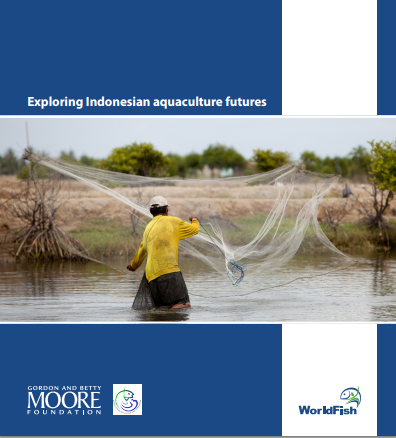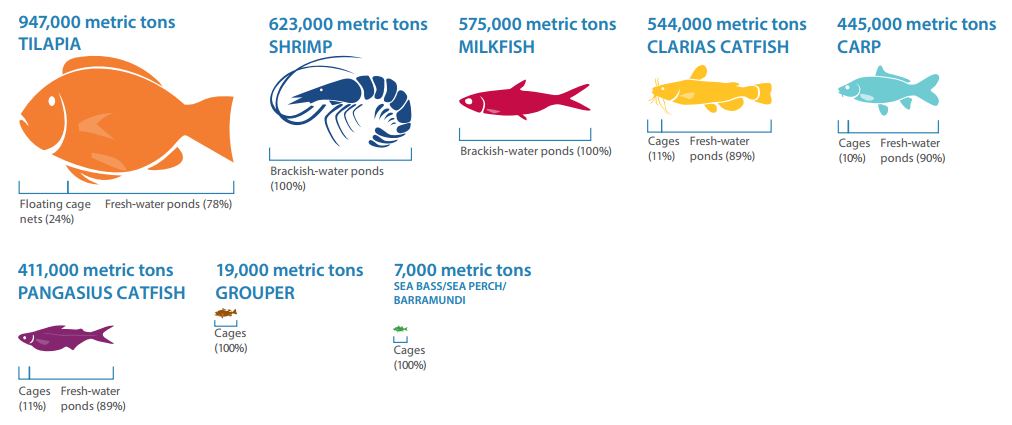Aquaculture is the fastest-growing food production sector globally, with production projected to double within the next 15–20 years. Future growth of aquaculture is essential to providing sustainable supplies of fish in national, regional and global fish food systems; creating jobs; and maintaining fish at affordable levels for resource-poor consumers. To ensure that the anticipated growth of aquaculture remains both economically and ecologically sustainable, we need to better understand the likely patterns of growth, as well as the opportunities and challenges that these trends present. This knowledge will enable us to better prioritize investments that will help ensure the sustainable development of the sector.
Aquaculture is the fastest-growing food production sector globally, with production projected to double within the next 15–20 years.
In Indonesia, WorldFish and partners have applied a unique methodology to evaluate growth trajectories for aquaculture under various scenarios, as well as the opportunities and challenges these represent. Indonesia is currently the fourth largest aquaculture producer globally, and the sector needs to grow to meet future fish demand.
To ensure that the anticipated growth of aquaculture remains both economically and ecologically sustainable, we need to better understand the likely patterns of growth, as well as the opportunities and challenges that these trends present.
The analysis indicates that aquaculture will overtake capture fisheries as the major source of fish in Indonesia before 2030 and that investment in aquaculture will be essential in order to increase domestic fish supplies and consumption, maintain affordable fish prices for domestic consumers, and sustain the contribution fish makes to Indonesian food and nutritional security. Business-as-usual projections indicate that aquaculture will grow to more than 10.1 million metric tons per year, create 8.9 million full-time-equivalent jobs in production, and be an industry with production values of USD 39.5 billion by 2030. Increased investment in aquaculture for either export or domestic markets will generate more social and economic benefits, greater production volumes and values, additional employment, and higher consumption among domestic consumers.
The analysis indicates that aquaculture will overtake capture fisheries as the major source of fish in Indonesia before 2030.
Aquaculture’s growth is necessary to meet future food and nutrition security requirements, but creates challenges for managing environmental impacts. All aquaculture growth projections modeled in Indonesia increase environmental impacts. Three particular environmental challenges emerge around land and habitats, sustainable aquaculture feeds, and reducing fresh water use, all of which require significant investment and change from business-as-usual approaches.
All aquaculture growth projections modeled in Indonesia increase environmental impacts.
The learning from this research provides a foundation for future interventions in Indonesian fish food systems, as well as a suite of methodologies that can be applied more widely for insightful analyses of aquaculture growth trajectories in other countries or regions.
Citation: Phillips, M.., Henriksson, P.J.G., Tran, N., Chan, C.Y., Mohan, C.V., Rodriguez, U-P., Suri, S., Hall, S., Koeshendrajana, S. (2015). Penang, Malaysia: WorldFish. Program Report: 2015-39
This work is part of PIM's research on Global and Regional Foresight Modeling Tools and was co-financed by PIM through the Global Futures and Strategic Foresight project.
Adapted from the original post at https://www.worldfishcenter.org/content/exploring-indonesian-aquaculture-futures




